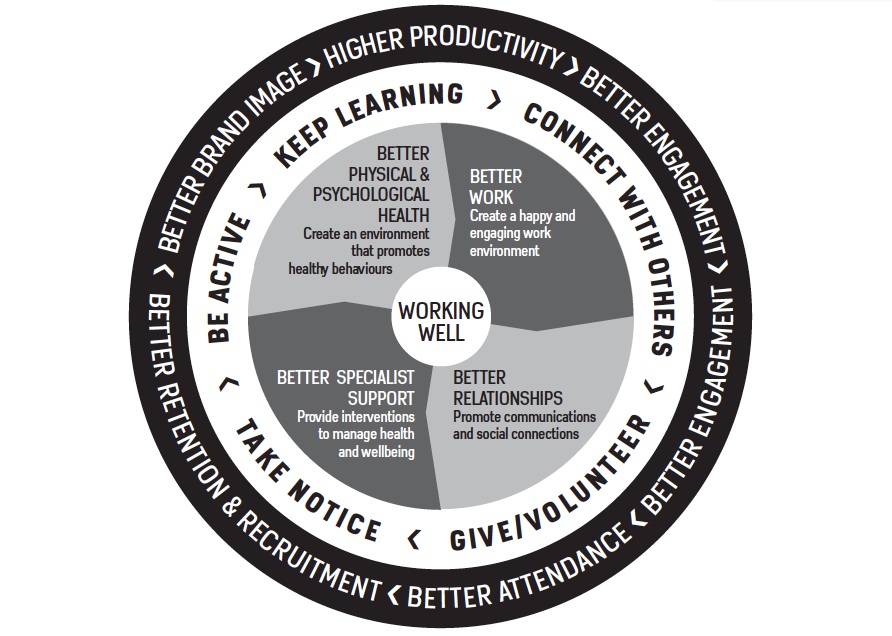In November 2013, England cricketer Jonathan Trott left the 2013/14 Ashes tour in Australia, citing stress-related illness and mental health issues as the cause. On 17 April 2014, the batsman extended his break from cricket after suffering a relapse.

If you read nothing else, read this…
- Workplace burnout is often perceived to have a stigma attached.
- It exists at all levels of employment.
- Employers can furnish staff with techniques to manage burnout.
- Line managers should be trained to discuss burnout with staff.
High-profile sports stars and celebrities openly admitting they are suffering from such issues can do a lot to raise awareness about what can be seen as a sensitive subject.
In the corporate world, one of the most high-profile examples of burnout in recent years was the case of Lloyds Banking Group chief executive Antonio Horta-Osorio, who took a two-month leave of absence at the end of 2011 because of exhaustion. He was allowed to return to work only after a thorough medical investigation.
According to a study conducted by Harvard Medical School in the US in May 2013, 96% of top managers said they felt burned out to some extent, and one-third of them said the problem was extreme.
Mental health issues cost the UK about £70 billion a year, according to the Organisation for Economic Co-operation and Development’s (OECD) Mental Health and Work: United Kingdom report, which equated this figure to a 53% loss in employment and productivity.
Such statistics highlight why organisations need to be aware of workplace burnout, and they must bear in mind that it can happen to staff at all levels of an organisation. During the tough economic times of recent years, employers may have unwittingly contributed to employee burnout by putting extra pressure on their workforce, for example by expecting them to do more with less.
Reduce the stigma
However, workplace burnout is often still perceived as carrying a stigma, so staff may be reluctant to seek help at an early stage. Patrick Watt, corporate director at Bupa, says employers should work to reduce this stigma.
“Employers should acknowledge that it exists,” he says. “People ignore the impact mental health and burnout could have in the workplace. There is a compelling body of evidence that highlights its prevalence.”
Workplace burnout is characterised by symptoms such as exhaustion, lack of enthusiasm and motivation, and feeling drained. Sufferers may also exhibit frustration and/or negative emotions and cynical behaviour, thereby reducing their professional efficacy.
Philip Wood, executive director at Health Shield, says: “We should never underestimate the importance of our health and wellbeing. Leading healthier lifestyles can have a significant knock-on effect, both at home and at work. More employers are recognising the part they can play in supporting staff.”
Professional services organisation EY is a good example of how employers can focus on employee wellbeing to tackle burnout (see box below). The employer launched a wellbeing programme, called Health EY, which focuses on mental health in the workplace.
Offering employees training to boost their mental resilience can help them manage potentially pressurised areas of their work and can be key to reducing the likelihood of burnout, particularly for roles that have been identified as potentially stressful.
Employees’ legal rights
Employers should also be aware of employees’ legal rights. Under the Disability Discrimination Act 1995 and the Equality Act 2010, employers must make “reasonable job-related adjustments”, which include giving or arranging for training or mentoring, to help staff on sick leave get back to work.
Employee assistance programmes (EAPs) are the most commonly used benefit to support staff suffering from burnout. Stuart Shaw, principal consultant at Xafinity, says: “An EAP is widely recognised as a useful tool, but the difficulty in its use is the low take-up rates. In work environments with burnout, it is down to the organisation to promote these benefits.”
Other resources, such as fitness programmes, can also help to combat workplace burnout by improving employees’ overall wellbeing, says Shaw.
Employers can look to provide a better working environment to improve employee wellbeing. Giving staff simple information on wellbeing issues, for example how to improve their sleep patterns, how to stop smoking and limit alcohol consumption.
Health Shield’s Wood says: “Employee support can include confidential counselling and 24/7 GP helplines can help at the first signs of burnout. Cognitive behavioural therapy can help employees deal with their emotional support needs. Also, any back and body strains resulting from stress can be treated sooner rather than causing increased levels of stress, which can affect sickness absence levels.”
Line managers’ role
Line managers have an important role to play in managing workplace burnout. If employees know they can approach their manager about any difficulties, this can make a big difference.
Iain Laws, managing director of healthcare at Jelf Employee Benefits, says there is a wealth of resources and training available for managers to learn how to conduct difficult conversations and know how to address an employee’s problems. “Effective line management has a vital role to play in mitigating risk to the employees and the business of a poor approach to this issue,” he adds.
Cary Cooper, professor of organisational psychology and health at Lancaster University Management School, says trained managers will have better interpersonal skills to manage burnout.
“These people will not only recognise the symptoms of burnout, but can also manage them by praise and reward rather than fault-finding” he says. “However, there is a need to get rid of the long-hours culture and introduce flexible working, where employees can have flexi-time and flexi-place, to decrease burnout.”
Taking a proactive approach to managing burnout can help to identify problems before they progress to further illnesses or result in lengthy absences. Xafinity’s Shaw says: “It is a mental and physical balance that helps get people back to work. Employees need to be encouraged by employers.
“Burnout seems to be more widely accepted in other spheres of the world than in business. Sports stars go through dry patches and take periods of rest and come back, and it is the same in entertainment. But they come back stronger, and the workplace can learn lessons here.”

Case study: EY

Professional services organisation EY has taken a new approach to employee wellbeing by pledging to tackle burnout among employees.
Its latest initiative, Health EY, which was launched in February 2014, has a strong focus on mental wellbeing, which it believes is the biggest cause for concern within the organisation.
Health EY includes the introduction of mental health first-aiders across the organisation. These are employees that will be trained to act as a first point of call for colleagues seeking help or advice.
EY trains its employees to spot the key signs of burnout, such as stress. It has also created a mental health buddy scheme to provide an informal support network.
Susie Gray, employee relations manager at EY, says: “It is our way of getting employees to acknowledge that burnout and mental illness exist and to help staff understand the associated issues. We want to give employees confidence to deal with these issues. We are not asking them to be counsellors.”
The organisation also runs monthly health education campaigns, including sessions around behaviour theory and healthy eating. EY has also established clinical care pathways for muscular, mental and physical health conditions.
“Anyone can access these,” says Gray. “We want to remove the stigma of burnout. These are tools that employees know are there and signpost them to clinical help.”
EY pledged to focus on employee healthcare and wellbeing after signing up to the Department of Health’s Public Health Responsibility Deal.
Gray adds: “The deal means we don’t lose focus and it is good for us. We don’t want our employees burning out that is why we feel our approach works.
“We have these great topics and acknowledge all quarters of health, but what’s next is reaching out to more people to get to those who have a fear of coming to the events we run. It’s all about removing the stigma associated with workplace burnout.”

Viewpoint: Jill Flint-Taylor: Managing and preventing workplace burnout
Building a resilient workforce is critical if organisations are to perform at their peak and meet the challenges of constant change. Unfortunately, however, so much of working life serves to undermine resilience.
Employees get worn down by shifting goalposts, unrealistic targets and uncertainty about what is expected of them.
Managers that want to keep their teams strong and prevent burnout need to pay attention to these factors: work demands, sense of control, change, resources of information and work relationships.
In a difficult economic climate, we are all being asked to achieve more with less. It is important to recognise that pressure means different things to different people. The key is to communicate openly and regularly about what is expected and to help people prioritise so they can perform at their best and maintain a healthy work-life balance.
Keeping people informed and giving them a voice will improve morale and reduce stress in the short term, and it will also help employees to build resilience over the longer term by encouraging them to engage more actively with others and generate new ideas.
Managers have a key role to play, not just in keeping the team informed, but in ensuring they are equipped to do the job being asked of them. Investing in employee development is important too, so make performance conversations an integral part of management practice.
Those who want to enhance resilience in their teams at times of change need to find ways to involve and engage employees in the process. Employees are more likely to feel positive about change and even be energised and excited about it, if they feel they are involved in creating the way forward.
Issues such as infrequent feedback, inadequate training and out-of-date technology or equipment are all negative pressures that combine to push staff over the top into burnout.
However, employees’ relationships with their colleagues and their managers define how they feel about work. Lack of support, aggressive management styles and other people taking credit for achievements are the kind of issues that can make staff feel demoralised. It is important for leaders to actively create positive relationships.
Sometimes, during times of pressure, we can over-use our strengths, with an unintended, negative impact on employees. If your response to pressure, for example, is to take more control, it might be perceived that you are taking control away from the team.
Jill Flint-Taylor is an associate business psychologist at the Ashridge Business School
?????? mariluna
?????? ??????? ????? ???? ??????????, ???? ?????????, ?????????? ?? ???????? ??? ?????????. ???????? ??????? ? ???????? ?????????? ?????? ?? ? ????????? ?????? ??? ???? ?????????, ??? ?????? ???????????? ???? ?????????? ??? ???????? ??? ? ????????? ??????????. ? ??? ?????? – ?????????? ? ??????????? ????????, ? ??????? ? ????????? ?? ??????. ??? ????????? ? ???????????? ??????? ? ???????? ?? ?????, ?????? ???? – ??? ??????? ???? ???????, ?????? ?? ????? ?????? ???????? ??????????.
??????? ?????? 50 52 ???????
????? ???????, ??? ??? ????? ?????????? ????, ??????? ? ??????? ?????, ?? ?????????? ? ????????? ?? ????? ?????? ??????. ???????????? ????????, ??? ????? ????? ???????? ?????????? ?????? ????????? ?????????? ??? ????????????? ??????, ?? ????????? ?????? ????.
???????? ??????? ???????? ???????? ???????
? ????? ????????-???????? pepperstyle.ru ?? ??????? ?? ?????? ?????? ??????? ????????, ??? ?????? ??? ????????, ?????????????? ???????, ?????????? ????????? ? ???????????????? ???????. ?????? ???????????? ?? ????? ?????? ?????? ?? ????? ? ???????, ?? ??? ??????? ????.
?????? ??????? ???????? ??? ?????? ????
???????? ? ??? ???????, ???? ?????? ? ?????????? ??????? ??? ?????????? ????? ????????? ???????? ?????; ????? ?? ??????? ?????? ? ???????? ?????? ??? ????? ?????
Both employers and employees should avoid being sucked into the 24/7 lifestyle that technology has now made possible. The business will survive if the employee does not take that call at 10pm or decides to leave their works laptop at home when they go on holiday.
Really informative blog post.Much thanks again. Great.